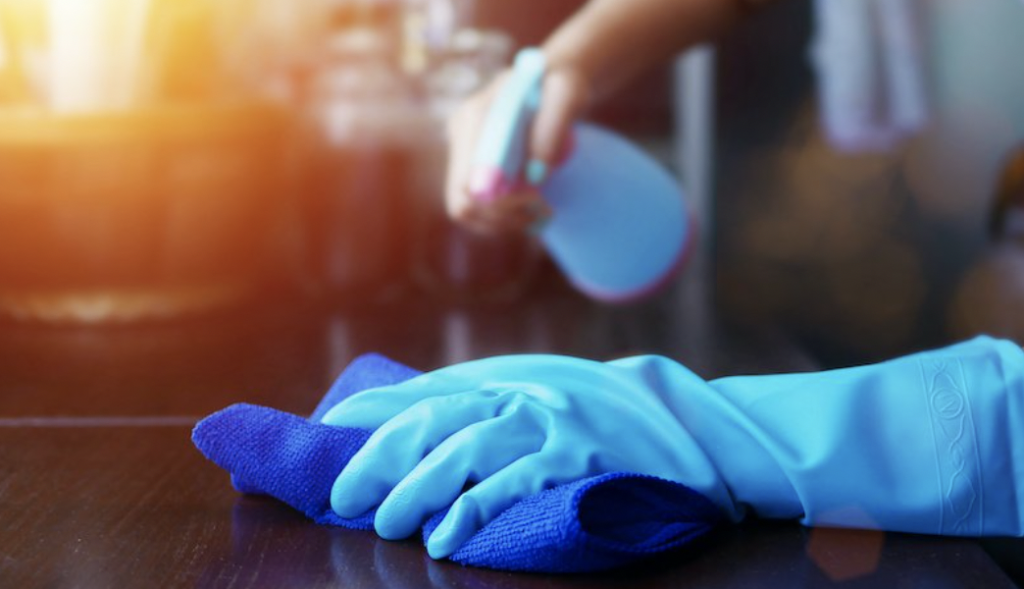Credit: SoftBank Robotics America, Source
As disinfection increasingly becomes a focus for cleaning professionals, it becomes all too easy for cleaners already stretched thin to overlook their basic cleaning practices in order to prioritise the disinfection of high-touch surfaces. After all, available information suggests that viruses like COVID-19 remain infectious longer on non-porous surfaces, making disinfection critical on the most frequently touched areas including door knobs, stair railings, restroom surfaces and the like.
However, focusing on those areas overlooks the importance of first thoroughly cleaning any areas that would need disinfection. “You’re not supposed to lead with a fogger machine,” points out Ricky Regaldo of Rozaldo Commercial Cleaning Services. “You can point it at a surface but if it’s not a clean surface, what’s it going to do? It’s pressurised, so it’s going to blow things up in the air. You’ve got to be careful.”
Experts with the Centers for Disease Control and Prevention explain the science behind that decision: “Thorough cleaning is required before high-level disinfection and sterilisation because inorganic and organic materials that remain on the surfaces of instruments interfere with the effectiveness of these processes.”
For soft, porous surfaces such as carpeted floor or rugs, for example, CDC encourages cleaners to first remove visible contamination if present and clean with appropriate cleaners indicated for use on these surfaces. Before moving in to clean an area with a fogger or electrostatic spray equipment, surfaces must be cleaned first.
All it takes is time — and for many cleaners, there’s not nearly enough of that to go around.
Keeping up with essential cleaning
The biggest challenge cleaning professionals now face is that the list of high-level disinfection is now growing, even as these companies battle staffing challenges. The cleaning industry has long battled high levels of turnover, in some cases approaching 200 percent. That long-time trend is now being exacerbated by workers on the frontline of the pandemic who face infection, as well as workers who must take time off to care for ill or at-risk family members, and are further stretching the numbers of some commercial cleaning companies’ staff.
It’s for this reason that there has been a surge in the adoption of automated solutions. Cleaners are now turning to technology solutions to tackle basic tasks, freeing staff up to focus on the critical high-level tasks such as disinfection. Robotic cleaning technologies are able to offload a significant portion of daily cleaning tasks like vacuuming and deliver a confirmed clean prior to disinfection — while supporting new norms around social distancing. Once the autonomous vacuum sweeper performs its programmed cleaning pattern, human experts can come in with disinfection equipment and feel more confident that no remaining dirt will hinder the disinfection process.
Understanding disinfectant guidelines
Once basic cleaning activities have been performed, it’s time to move onto disinfection and the next round of questions. The Environmental Protection Agency is encouraging cleaners to use products from its List N: Disinfectants for use against SARS-CoV-2. The more than 360 EPA-registered products listed meet EPA’s criteria for use against the novel coronavirus that causes COVID-19.
While EPA addresses a list of frequently asked questions on its site, it can in some cases be challenging to determine at a glance whether or not a name brand product is EPA registered. That’s because registered products may be marketed and sold under different names. Due to the number of questions from cleaning professionals around which disinfectants are appropriate to use, the Association for the Health Care Environment is sharing an infographic created by the Alliance for Consumer Education. The infographic directs cleaners to search for the EPA registration number on the product’s label, usually on the back toward the bottom, and cross-reference it on List N.
To further help cleaners, List N can now be sorted by surface type and target institution.
Supporting essential cleaning with new tools
Cleaners are stepping up today as frontline employees, but they can’t do it alone. It’s becoming increasingly important to support these workers with tools and technology that help them maintain the needed levels of efficiency. Only with this support can these workers help keep our facilities safe.
Fortunately, this support doesn’t have to come with an enormous upfront investment. Some autonomous cleaning solutions like Whiz, the autonomous vacuum robot from Softbank Robotics developed and distributed in partnership with Brain OS and ICE Robotics, are available for cleaning companies and property owners to deploy in their facilities.

